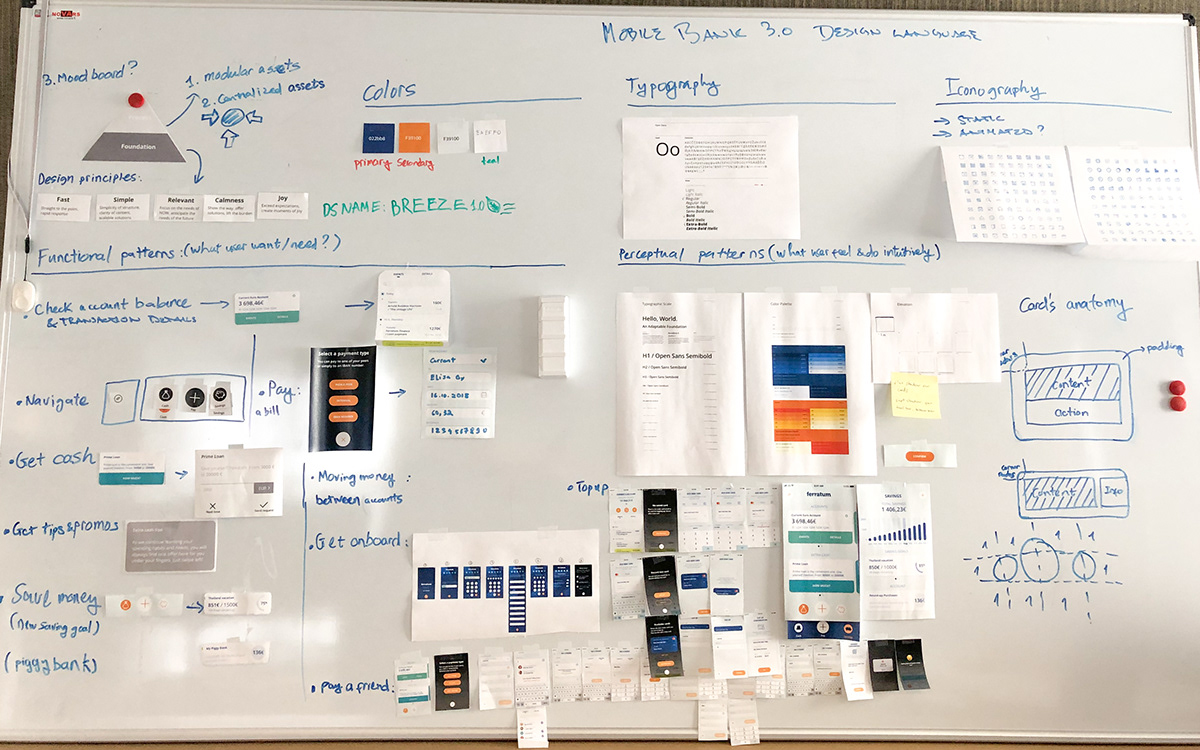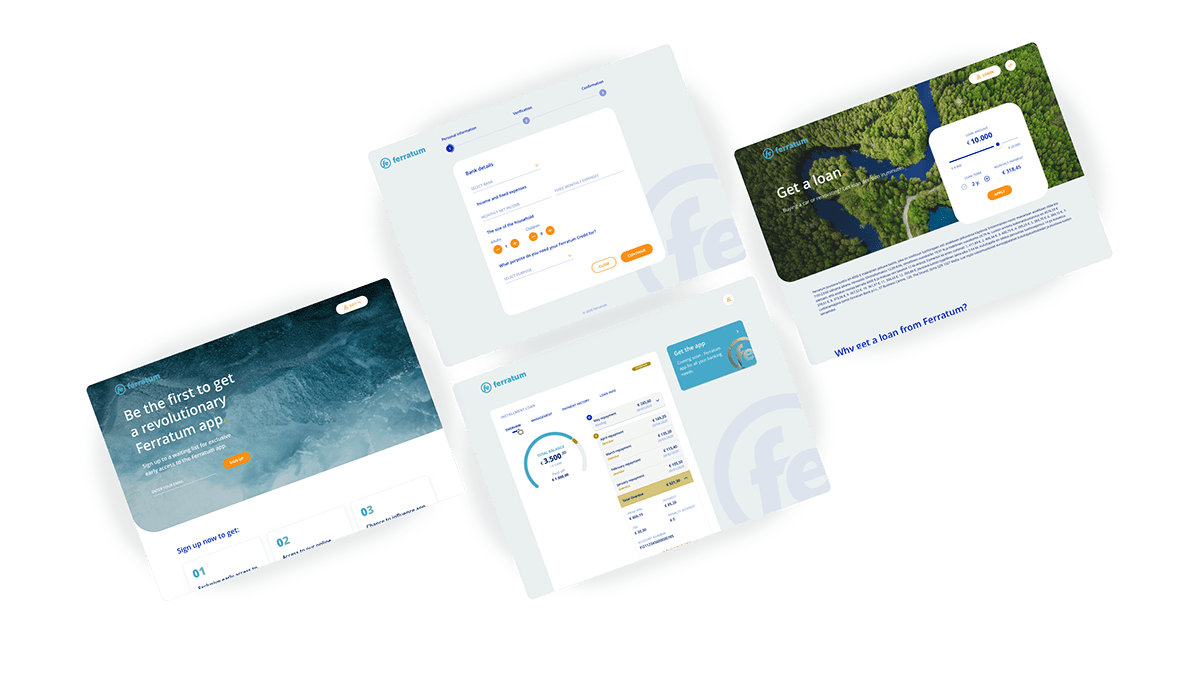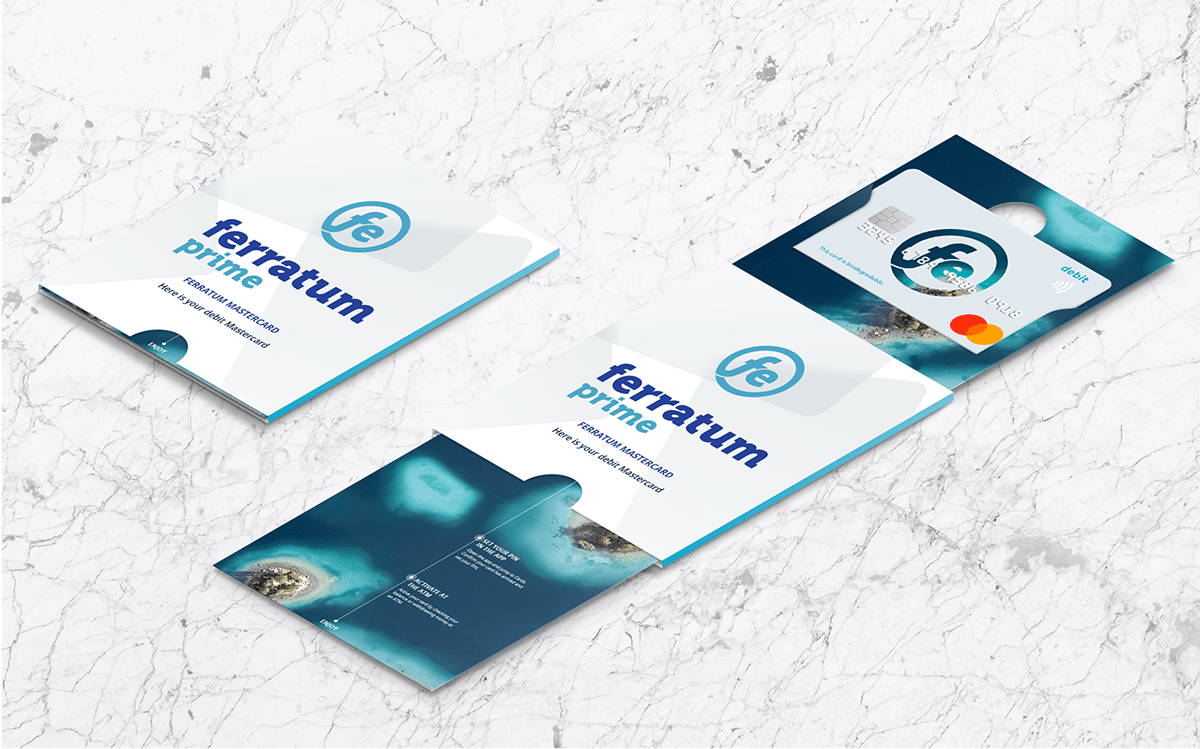What's Ferratum?
Ferratum, headquartered in Helsinki, Finland was founded in May 2005 and has expanded its operations across Europe, North America, South America, Africa, Asia and Australia.
Ferratum has developed its own proprietary core mobile banking platform, the Mobile Wallet. The Mobile Wallet is to be rolled-out throughout Europe and Ferratum will position the Mobile Wallet in the center of its customer communications.
Problem and team setup
At its peak, Ferratum has 1200+ employees, operating across 25 countries. The company has its background in lending and financial service, neither design thinking process nor agile working were understood and embraced. This practice generated a lot of waste, inconsistency and subpar design works. Design team and design work were treated merely as content producer for marketing department.
In 2017, Ferratum had decided to start develop and launch Mobile Wallet platform. Approaching this challenge with user centric mindset, we concluded that things couldn't go the old way anymore. Management had realised the problem and green-lighted the overhaul project.
New centralised design team was formed and tasked to create upcoming unified Ferratum design system, while supporting Ferratum's existed operations (web channel, brand identity, traditional ad).
The team was consisted of six in-house designers, and from three to four outsource designers at times. We were:
-Design manager: Lars Nordqvist
-Product Designer (App): Dung Nguyen
-Ferratum DS Owner: Dung Nguyen
-UX/UI Designer (Web): Radoslav Michalisko, Liina Koskaru
-UX Researcher: David Mcgookin
Goals: improving ROI, making it easier to launch new products / channels, standardise design language, increase working efficiency, improving general UX (taking design deliveries' quality to the next level):
Working process
Work was carried out simultaneously in two tracks with typical DesignOps manner:
Track 1: Improving and supporting existing design (web, marketing, etc.) for company's day-to-day operation.
All existed artefacts from all channels: web, mobile app, social media, ad were collected and analysed for UX/UI shortcomings and inconsistencies. Selected group of employees and customers were interviewed for feedback and insights.






Setting up centralised Sketch design library, with appropriate components for each platform. Standardised design tools (Sketch + Abstract, Invision, Zeplin, Usabilityhub); introduced the complete design process: ideation, prototyping, validation and refining for all team members.
Design components, for instance: buttons, forms, cards were broken down to "atom" level and reconstructed to be re-usable as much as possible across all platforms. This practice also served as basis for building block of the design system.
User testing was employed vigorously from exploration phase when design new feature till validating final design.
Track 2: Designing / developing new Mobile Wallet and accompanied proprietary design system.
Since this platform was designed from scratch, so it was easier to run a standard service design process. This app also acted as forerunner and test bed for all new ideas to optimise workflow without hurting others existing operations.
We initiated the process by understanding Ferratum's mission and strategy as a neobank. Customer base got segmented & prioritised through surveys, analytics, persona exercise and customer journey mapping.
Then whole group brainstormed about pain points and user's needs. Solutions were presented and prototypes were prepared for validation purposes. We mostly employed qualitative testing in this phase.
In the end of the cycle, the product was evaluated by its impact and measurable metrics.









Outcome
Revamped mobile and desktop web lending service were rolled out across all markets. Beside scalability, usability and mobile compatibility of the site were planned for from the start. Though they were built on different technology, web and app now are looked and felt coherently.

Ferratum 2020 web snapshots
New Mobile Wallet application that offers: 100% online and human-free onboarding experience, IBAN account, Apple Pay / NFC enabled debit card, loan product (Extra Cash) and more.
In the near future, it will become a complete financial platform with upcoming investment instruments, insurance options and more diverse lending products.

Ferratum Wallet 2020 Screenshots
Ferratum custom NFC payment in action (Raw capture)
Saving with Ferratum Wallet (Raw capture)
Ferratum Wallet basic navigation (Raw capture)

Ferratum's Debit Mastercard design and packaging
Ferratum Design System covers all channels with comprehensive guideline and resources for designers from: design tokens, tone of voice guide, motion and information architect.

Ferratum DS
Ambient marketing material
Conclusion
Consider the complexity and the large scope of the project, it was a big success. For the first time in Ferratum's history, attitude toward UX design and design work in general was improved greatly. Design team is now capable of producing high quality work efficiently. Both our Mobile Wallet and web channel were received positively by customers.
Ferratum Mobile Wallet was launched successfully in Latvia in 2020 (~100.000 downloads) with upcoming other European countries in 2021. Ferratum web channel has driven sales up 20% on average across all active countries. Ferratum's digital presence is now more unified and coherent than ever.
On the contrary note, there was still rooms for improvement, such as motion and animation aspect of the design weren't invested properly. Due to resource constraint and limited capability, generic / pre-made motions were used widely. Sound and tactile feedback were neglected totally too.
UI developing and refining cycle was still very troublesome, with developer and designer cooperation wasn't always smooth.
Frequent business direction changes and delays hampered design process and overall project's velocity.






